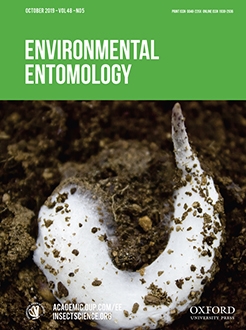Although insect defoliators are recognized as major agents of ecological change in North American forests, their ecology in industrially degraded landscapes with poor-quality soils, metal contamination, and marginal vegetation growth is largely unknown. We fed gypsy moth larvae (Lymantria dispar L.) paper birch leaves (Betula papyrifera Marsh) (Fagales: Betulaceae) collected from four forested catchment areas near an abandoned Cu/Ni smelter in Sudbury (Ontario, Canada) with different histories of industrial degradation and remediation (reference, remediated, natural recovery, and degraded). We measured caterpillar feeding, frass properties and decomposability, and the effects of frass on the growth of ticklegrass (Agrostis scabra Willd.) (Poales: Poaceae). Caterpillars generally ate more (+25–50%) and produced more frass (+30–40 %) on a diet of leaves from the more industrially degraded sites. Frass had an overall positive effect on plant survivorship (+4.1–10.8 effect size) and growth (+0.1–0.5 effect size), although the smallest benefits came from frass derived from vegetation from the more heavily degraded sites. Our results suggest that defoliating insects respond to differences in environmental degradation and remediation and that industrial landscapes may be particularly susceptible to more extensive defoliation and increased conversion of foliar biomass into frass, which could alter plant growth and survivorship, soil development, and nutrient and metal cycling. Some of these effects may pose additional challenges to landscape recovery (e.g., increased defoliation) while others may be beneficial (e.g., enhanced plant growth and soil development).
How to translate text using browser tools
7 September 2019
Insect Defoliators in Recovering Industrial Landscapes: Effects of Landscape Degradation and Remediation Near an Abandoned Metal Smelter on Gypsy Moth (Lepidoptera: Lymantriidae) Feeding, Frass Production, and Frass Properties
Michael J. McTavish,
Emily Smenderovac,
John Gunn,
Stephen D. Murphy
ACCESS THE FULL ARTICLE
It is not available for individual sale.
This article is only available to subscribers.
It is not available for individual sale.
It is not available for individual sale.

Environmental Entomology
Vol. 48 • No. 5
August 2019
Vol. 48 • No. 5
August 2019
caterpillars
Decomposition
defoliation
metal toxicity
plant growth




